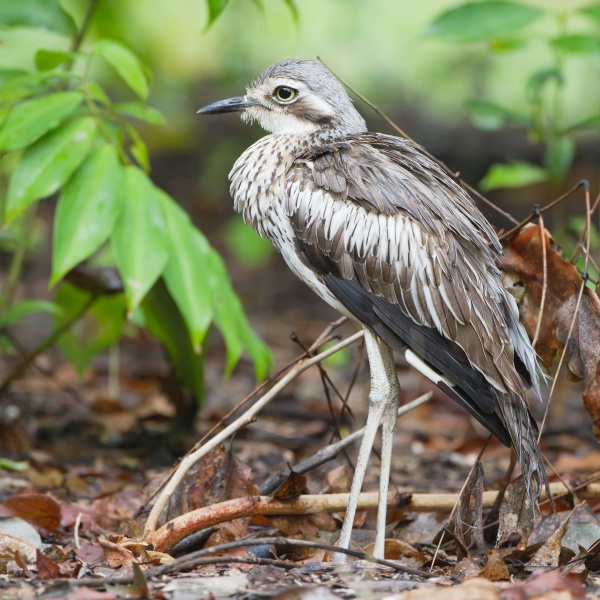Facts About Bush stone-curlew
The bush stone-curlew, also known as the bush thick-knee, is a captivating bird native to Australia. This sizeable, ground-dwelling bird typically inhabits open plains and woodlands, where it nocturnally hunts for insects. Adorned with grey-brown plumage accented by dark streaks, the bush stone-curlew is distinguished by its large eyes and long legs. While it is capable of flight, it primarily relies on its excellent camouflage for protection during daylight hours.
In terms of nesting behavior, the bush stone-curlew lays two eggs directly on the ground, often near bushes or fallen branches. Both parents participate in caring for the eggs, demonstrating their strong parental instincts.
First described by John Latham in 1801, the bush stone-curlew belongs to the family Burhinidae, making it a relative of the beach stone-curlew. Renowned for its unique vocalizations, this bird's eggshells are exceptionally well-camouflaged, blending seamlessly into their surroundings and becoming almost undetectable.
As a primarily nocturnal species, the bush stone-curlew feeds on a variety of small animals. When threatened, it can remain motionless, becoming almost invisible in its environment. It is also notably agile, both on the ground and in flight. Its call is loud and distinctive, often echoing through the night. Breeding pairs are territorial and both parents actively nurture their offspring.
The bush stone-curlew can be found in a range of habitats across Australia, with a preference for open forests and grasslands. Although it is not migratory, it may relocate locally in response to changes in weather conditions. Unfortunately, the population has declined in some areas due to threats such as fox predation and habitat destruction.
Conservation efforts are underway to protect this unique bird, including reintroduction programs in specific regions. While the bush stone-curlew is currently listed as "Least Concern" on the IUCN Red List, with an estimated population of 10,000 to 15,000 individuals, it is considered endangered or vulnerable in some Australian states. This underscores the importance of ongoing conservation measures to ensure the survival of this remarkable species.
